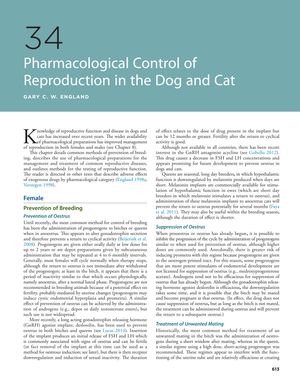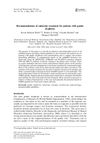Pharmacological Control of Reproduction in Dogs and Cats
January 2019

TLDR Different drugs are used to manage breeding, prevent or end pregnancy, and treat reproductive issues in dogs and cats.
The 2019 document outlines various pharmacological strategies for managing reproduction in dogs and cats, including the use of progestogens, GnRH agonists like deslorelin, and GnRH antagonists such as acycline to prevent oestrus and control breeding. Aglepristone is used to prevent pregnancy after unwanted mating or to induce abortion. Prostaglandins and prolactin inhibitors like cabergoline are employed to terminate pregnancies and treat reproductive diseases such as pyometra and pseudopregnancy. The document also discusses the use of hCG and progesterone for habitual abortion, oxytocin and calcium gluconate for uterine inertia, and prostaglandins for postpartum metritis. Male contraception and behavior management involve progestogens, androgens, oestrogens, and GnRH agonists, with finasteride used for prostatic disease. Cryptorchidism may be treated with GnRH or hCG, with a success rate of around 20%. For diagnosing the presence of testicular tissue, hCG or a GnRH analogue is recommended to stimulate testosterone secretion, with a significant increase in testosterone concentration after stimulation confirming the presence of testicular tissue.


